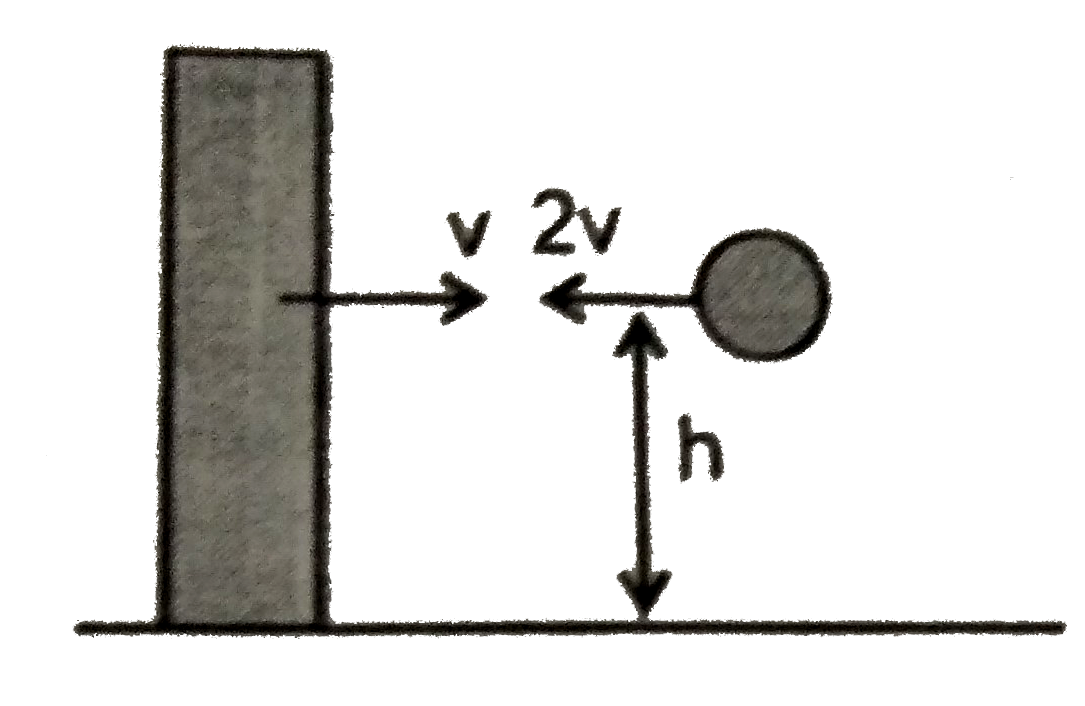Which of the following potential energy curves in figure., cannot possibley describly describe the elastic collision of two billiard balls ? Here r is distance between centres of the balls.

The potential energy of a system of two masses varies inversely as the distance(r) between 1
them, i.e., V(r)α1/r. When the two billard touch each other, P.E. Becomes zero i.e.,at r=R+R=2R, V(r) =0. Out of the given graphs, curve (v) only satisfies these two condition. Therefore, all other curves cannot possibly describe the eleastic collision of two billiard balls.
Topper's Solved these Questions
Similar Questions
During elastic collision of two balls, is kinetic energy conserved during the short interval of contact of balls ?
View SolutionAnwer carefully, with reasons:
a) In an elastic collision of two billiard balls, is the total kinetic energy conserved during the short time of collision of the balls (i.e. when they are in contact)?
Is the total linear momentum conserved during the short time of an elastic collision of two balls?
c) What are the answers to a) and b) for an inelastic collision?
d) If the potenital energy of two billiard balls depends only on the separation distance between their centers, is the collision elastic or inelastic? (note we are talking here of potential energy corresponding to the force during collision, not gravitational potential energy).
View Solution
Knowledge Check
Which one of the following statement does not hold good when two balls of masses m1andm2 undergo elastic collision
AWhen m1<<m2andm2 at rest, there will be maximum transfer of momentumBWhen m1>>m2 at rest . After collision the ball of mass m2 moves with four times the velocity of m1CWhen m1=m2andm2 at rest , there will be maximum transfer of K.E.DWhen collision is oblique and m2 at rest with m1=m2 after collision the balls move in opposite directionsWhich one of the following statement does not hold good when two balls of masses m1 and m2 undergo elastic collision
AWhen m1<<m2 and m2 at rest, there will be maximum transfer of momentumBWhen m1>>m2andm2 at rest, after collision the ball of mass m2 moves with four times the velocity of m1CWhen m1=m2 and m2 at rest, there will be maximum transfer of K.E.DWhen collision is oblique and m2 at rest with m1=m2 after collision the balls move in opposite direction.In an elastic collision of two billiard balls which of the following quantities is not conserved during the short time of collision :
AMomentumBTotal mechanical energyCKinetic energyDNone
Anwer carefully, with reasons:
a) In an elastic collision of two billiard balls, is the total kinetic energy conserved during the short time of collision of the balls (i.e. when they are in contact)?
Is the total linear momentum conserved during the short time of an elastic collision of two balls?
c) What are the answers to a) and b) for an inelastic collision?
d) If the potenital energy of two billiard balls depends only on the separation distance between their centers, is the collision elastic or inelastic? (note we are talking here of potential energy corresponding to the force during collision, not gravitational potential energy).
View SolutionCalculate the interaction energy of two balls whose charges q1 and q2 are spherically. The distanace between teh centres of the balls is equal to l.
View SolutionIn an elastic collision of two billiard balls, which of the following quantities remain conserved during the short time of collision of the balls (i.e., when they are in contact).
(a) Kinetic energy . (b) Total linear momentum ?
Give reason for your answer in each case.
View SolutionAssertion: Collisionn between two billiard's ball are inelastic
Reason: Momentum remains conserve during the collision.
View SolutionA ball collides elastically with a massive wall moving towards it with a velocity of v as shown. The collision occurs at a height of h above ground level and the velocity of the ball just before collision is 2v in horizontal direction. The distance between the foot of the wall and the point on the ground where the ball lands, at the instant the ball lands, will be :

View Solution
